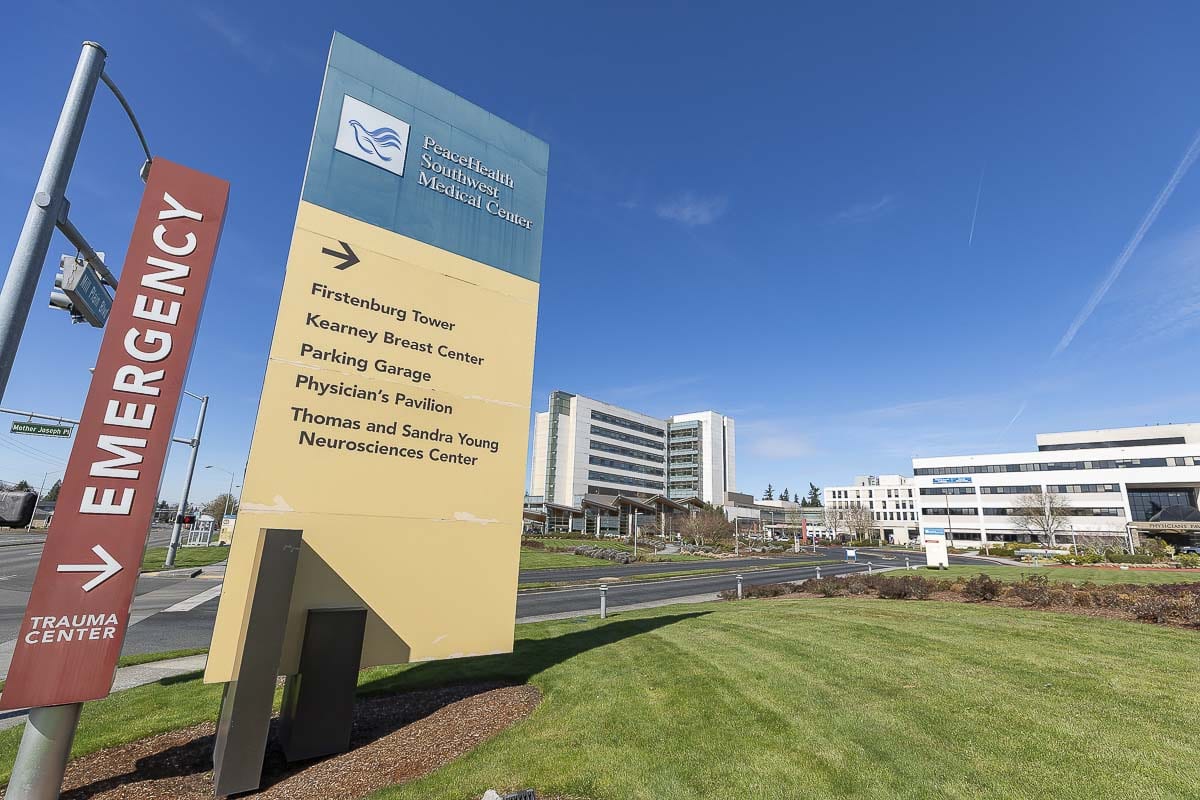Clark County is hoping to see an increase in medical supplies throughout the week
VANCOUVER — Healthcare workers across Clark County continue to brace for what is expected to be a long, difficult fight against the spread of COVID-19.
“It’s been an interesting time,” says Dr. Jason Hanley, medical director of the emergency department at PeaceHealth Southwest. “So many people are stepping up, staying over to help plan and prepare.”

At the same time, Hanley says people on the frontlines of the pandemic are concerned. For each other, for their families, and for the people they feel called to serve.
“There’s this presence of a palpable edge to the facility as well,” Hanley says, “where everybody knows how important this is and to do it right, and that this could be a very difficult two, three, four months ahead.”
Triage tents have been erected outside of both PeaceHealth Southwest and Legacy Salmon Creek in an effort to provide space for potential COVID-19 cases to be checked out, without exposing others to the virus.
Hanley says the number of patients experiencing respiratory symptoms picked up late last week, and then an increase of people with fevers and other COVID-like symptoms on Monday.
“So it may be coming this week, which is kind of what we were predicting,” Hanley says, “looking at the models from Italy, New York, and Seattle. We’re expecting this weekend or next week our caseload will significantly increase.”
Should that happen, Hanley says the hospital could use space inside the emergency department for beds to house patients with severe symptoms, monitoring them if they take a turn for the worse and need more intensive treatment.
Supplies for testing patients remain in short supply. Hanley says PeaceHealth purchased extra gloves, masks, and gowns when news of the new virus began to come out of China, but even so they’re being cautious with how much they use.
“We’re using a tremendous amount every day,” he says, “and we’ll use even more over the next several months. So we’re continually trying to acquire PPE by any means we can to keep our caregivers safe and help decrease the spread of the disease throughout the community.”
There may be some hope in that fight. Congresswoman Jaime Herrera Beutler, in a statement to Clark County Today, said she has “knocked on every door I can think of” in the quest to secure more protective equipment for Southwest Washington healthcare facilities.
“I’m now cautiously optimistic that these efforts are bearing fruit; I’ve been notified by the director of the state emergency management operation that Clark County has recently been elevated to Tier I status – meaning we are now a top priority for PPE,” Herrera Beutler wrote. “However, I’m not resting on this front until we actually see the deliveries of PPE to match our urgent needs.”
Erid Frank with Clark Regional Emergency Operations Center said the county has received a “limited” amount of the PPE supplies that have been requested.
“Clark County Emergency Operations Center and Clark County Public Health are having multiple conversations daily with state and federal partners to ensure Clark County receives the supplies needed to help keep medical professionals and first responders safe during this outbreak,” Frank said in an email.

CREOC is also seeking donations of supplies from individuals and businesses, specifically of medical gloves, gowns, surgical masks, and N95 masks. They can contact the county to arrange drop-off by emailing COVIDsupplies@cresa911.org.
Testing supplies still limited
As we wrote late last week, supplies to conduct tests for COVID-19 remain severely limited.
In a letter sent to the governor last Thursday, Clark County’s eight top elected officials urged Governor Jay Inslee in a letter to increase supplies to the region.
“Clark County is at a critical tipping point in our ability to respond and mitigate the spread of the virus in our community,” the letter said.
The mayors said public health officials are desperate to begin testing residents at long term care facilities in order to get ahead of the virus, but lack the supplies to do so.
8,000 testing kits received late last week went to King, Pierce and Snohomish counties, where the majority of the state’s confirmed COVID-19 cases have been located.
Hanley says turnaround time for tests is still four or five days, though they are hoping to be able to do on-site testing in the near future. The president has promised tests that could be self-administered are on their way, which could decrease the amount of equipment needed for testing.
While they would love to be able to test anyone worried they’ve been infected, Hanley says people can most help by staying home, especially if they think they might be sick.
“If we overwhelm the medical services, people are going to suffer in terms of becoming extremely ill or possibly even having more deaths than need to occur,” Hanley says. “And when testing does become available, make sure that you get tested if you have symptoms, so we can decide if you have COVID or not, and be sure they’re quarantined so you don’t spread it to others.”
With an increase of cases expected in the next week, Hanley says it’s important that people not come to the hospital unless they’re having difficulty breathing, have bluish lips or fingers, or a very high fever.
“A lot of people—we estimate roughly 80 percent—will be able to be cared for at home and have relatively minor symptoms, similar to the influenza infection that a lot of us get yearly,” Hanley says, “and we want to leave the resources at the hospital, as well as our EMS colleagues, to the 20 percent of people that get really ill.”




